Chimeras in Punta Cana
 Jan 02, 2016 • 7:53 PM UTC
Jan 02, 2016 • 7:53 PM UTC Dominican Republic
Dominican Republic 140x Magnification
140x Magnification Microorganisms
Microorganisms
otrase
Learn about the author...
1posts
0comments
1locations
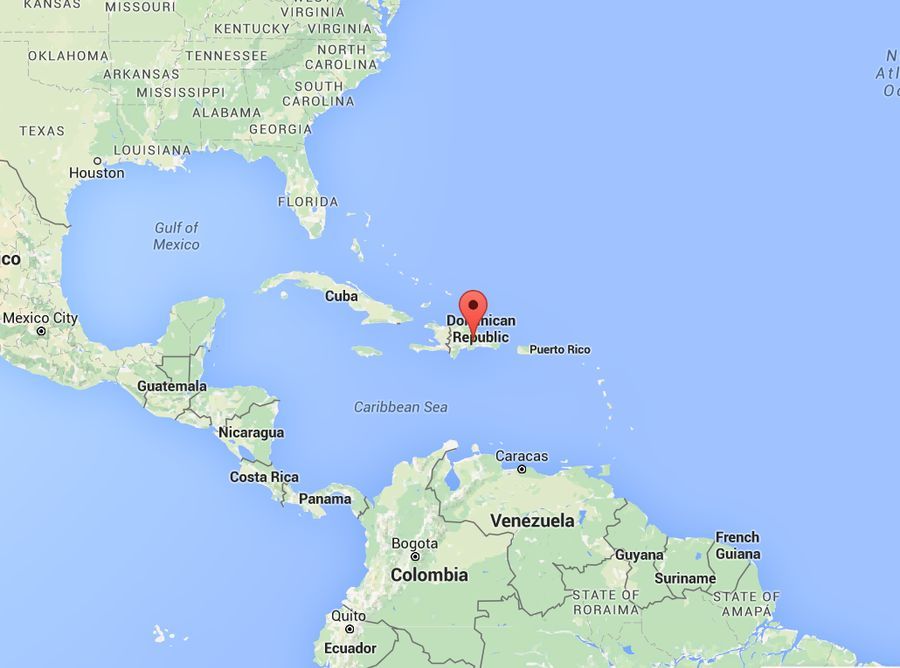
The Dominican Republic was the first place that Christopher Columbus landed and conquered in December, 1492. It became the first European settlement in the Americans and was the main site of the Spanish operations in their conquest of the Americas. Since then, the Dominican Republic has had many different governments, which began with a declaration of independence from Spain in 1821. According to ecological sources on the island, over two thirds of the virgin forest has been destroyed due to fire and land cultivation since Columbus’ arrival. Today, the Dominican Republic is the site of many resorts and hotels as tourism is helping to boost the economy, and the Dominican Republic now the most popular tourist destination in the Caribbean. This past week, we were staying in Punta Cana, on the easternmost tip of the island.
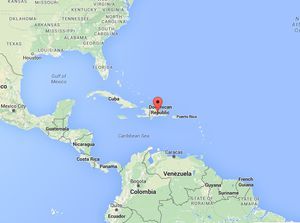
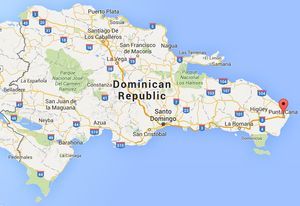
As we were walking down a street in Punta Cana, we noticed a bush with beautiful clusters of red and yellow flowers.
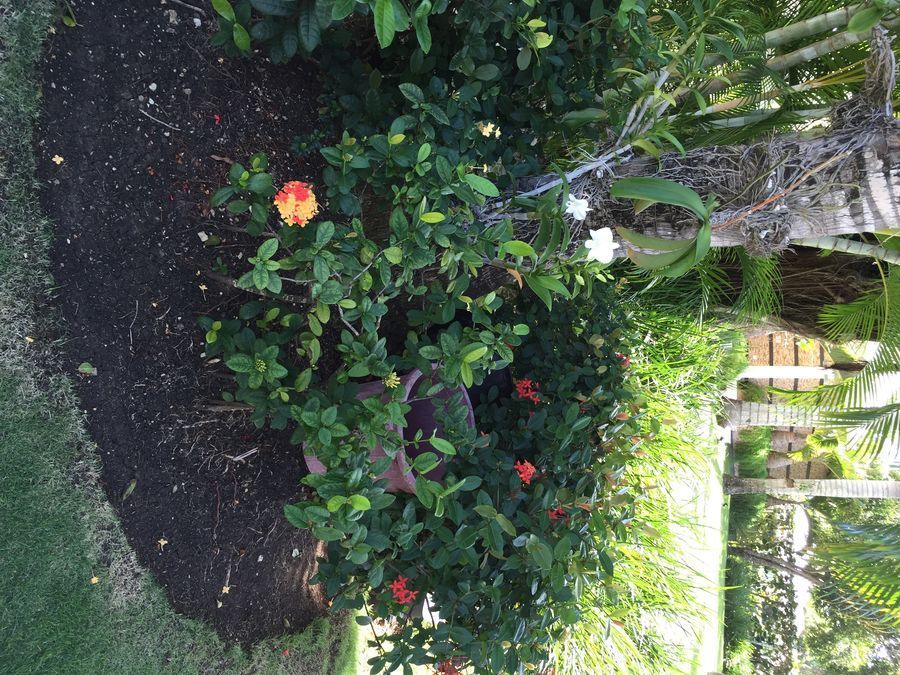
While most of these clusters were either red or yellow, one of the clusters contained both red and yellow flowers, and even petals that were multicolored as well.
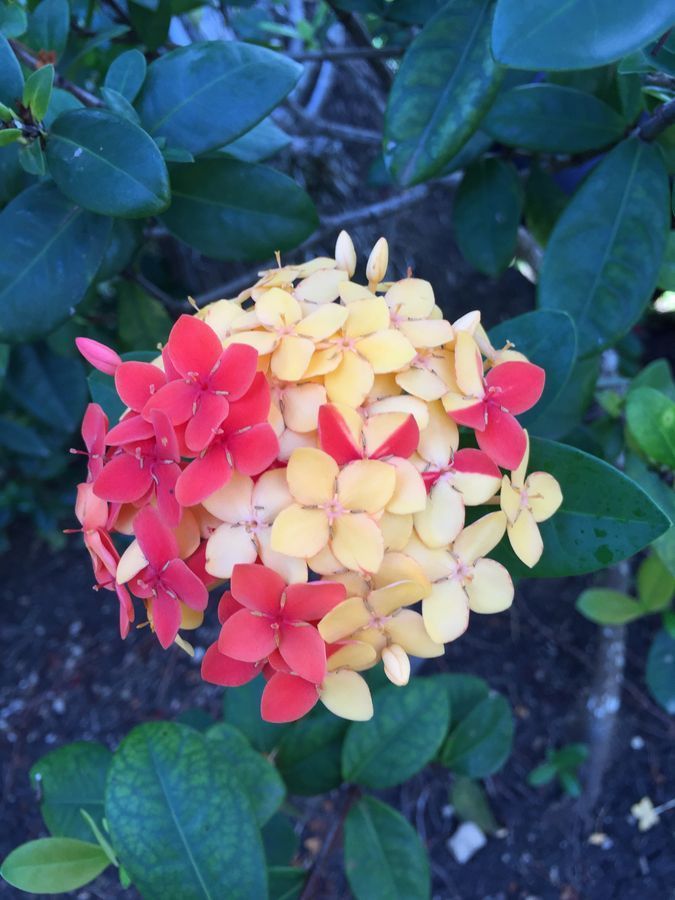
On the petals that were both red and yellow, we noticed that there was no gradient from one color to the next — there was a hard line between the colors, as if each cell was either red or yellow. Not only that, but there was a straight line down the petal dividing each color.
We decided to examine the petals underneath our FoldScope to see if there was any observable difference in the petal cells of the two colors, and also to see if there was a gradient from yellow to red if we looked at the petal on a smaller scale.
We decided to examine the petals underneath our FoldScope to see if there was any observable difference in the petal cells of the two colors, and also to see if there was a gradient from yellow to red if we looked at the petal on a smaller scale.
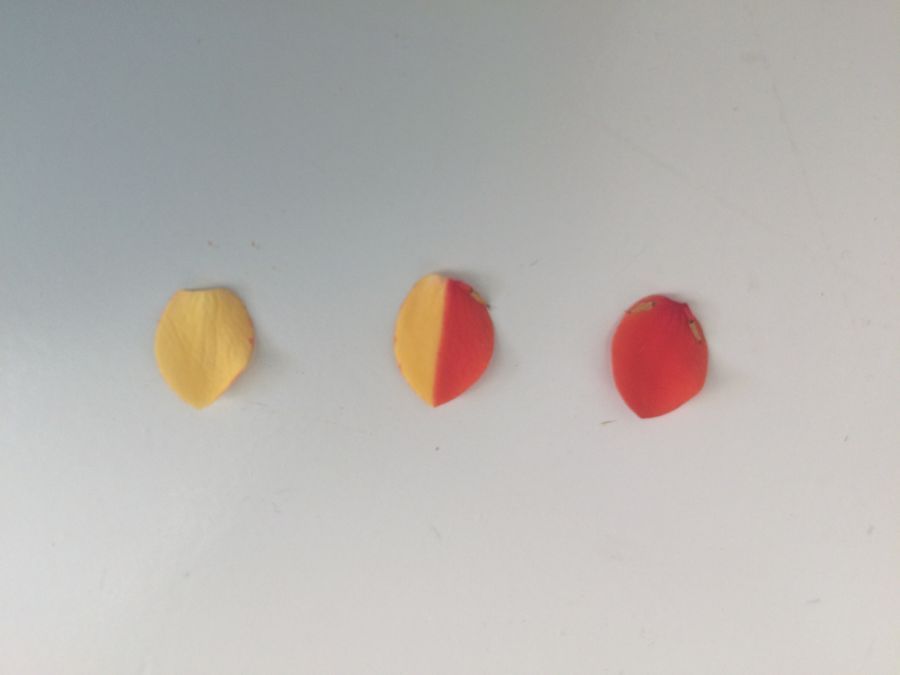
(From left to right: Petal from yellow flower cluster, petal from hybrid cluster, petal from red flower cluster)
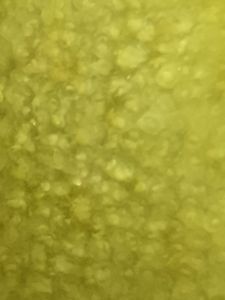
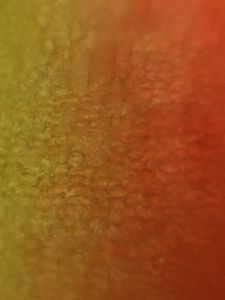
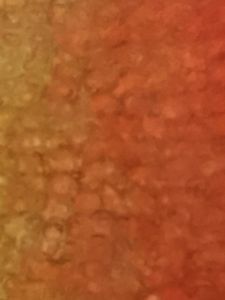
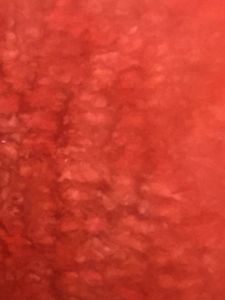
(From left to right, top to bottom: yellow side of hybrid petal, middle of hybrid petal, middle of the hybrid petal magnified, right side of hybrid petal)
As can be seen from the center picture showing the junction of the two colors, there is, in fact, a thin layer of orange cells. However, even on the microscopic level, this layer is very thin and most of the cells are either yellow or red. Other than pigment, there is no observable difference between the cells on the red side and the cells on the yellow side of the petal.
We identified this strange flower as belonging to the genus Ixora, which are colloquially known as Jungle Geranium, Flame of the Woods, Scarlet Jungleflame , or Burning Love. While Ixora is a genus that contains more than 400 species, most cultivars are hybrids from only a few popular species, such as Ixora coccinea , Ixora chinensis , and Ixora casei . Once native to Sri Lanka and Southern India, Ixora are now widely cultivated as a decorative shrub, especially in Southern Florida.
We believe this strange coloration to be a result of a mutation, most likely an artificial mutation. This mutation resulted in two different types of DNA being present in one plant; this is also called a chimera plant. The most visual representation of a chimera plant is in the color of flower petals, and various types of coloration have been reported. Some chimera flowers have splotched colors on each of their petals, while some have one color in the middle of the petal and a different one on the perimeter. Our chimera happened to have both red and yellow flowers as well as some flowers having one half of a petal red and the other half yellow. Upon further inspection, however, most of the petals in the cluster of flowers had small splotches of red and yellow.
Though we discovered where this strange coloration probably came from, we still do not know why certain chimeras color differently and how the two sets of DNA in chimeras affect other parts of the plant besides flower coloration. Is this a result of differing DNA expression within chimeras of particular species, or something else entirely? As humans become more capable of genetically engineering different plants, it will become important to understand how and why certain chimeras express their strands of DNA differently.
We conducted this project as part of Professor Pringle’s EEB321 class at Princeton University.
As can be seen from the center picture showing the junction of the two colors, there is, in fact, a thin layer of orange cells. However, even on the microscopic level, this layer is very thin and most of the cells are either yellow or red. Other than pigment, there is no observable difference between the cells on the red side and the cells on the yellow side of the petal.
We identified this strange flower as belonging to the genus Ixora, which are colloquially known as Jungle Geranium, Flame of the Woods, Scarlet Jungleflame , or Burning Love. While Ixora is a genus that contains more than 400 species, most cultivars are hybrids from only a few popular species, such as Ixora coccinea , Ixora chinensis , and Ixora casei . Once native to Sri Lanka and Southern India, Ixora are now widely cultivated as a decorative shrub, especially in Southern Florida.
We believe this strange coloration to be a result of a mutation, most likely an artificial mutation. This mutation resulted in two different types of DNA being present in one plant; this is also called a chimera plant. The most visual representation of a chimera plant is in the color of flower petals, and various types of coloration have been reported. Some chimera flowers have splotched colors on each of their petals, while some have one color in the middle of the petal and a different one on the perimeter. Our chimera happened to have both red and yellow flowers as well as some flowers having one half of a petal red and the other half yellow. Upon further inspection, however, most of the petals in the cluster of flowers had small splotches of red and yellow.
Though we discovered where this strange coloration probably came from, we still do not know why certain chimeras color differently and how the two sets of DNA in chimeras affect other parts of the plant besides flower coloration. Is this a result of differing DNA expression within chimeras of particular species, or something else entirely? As humans become more capable of genetically engineering different plants, it will become important to understand how and why certain chimeras express their strands of DNA differently.
We conducted this project as part of Professor Pringle’s EEB321 class at Princeton University.
Sign in to commentNobody has commented yet... Share your thoughts with the author and start the discussion!
More Posts from otrase
No more posts from this author.